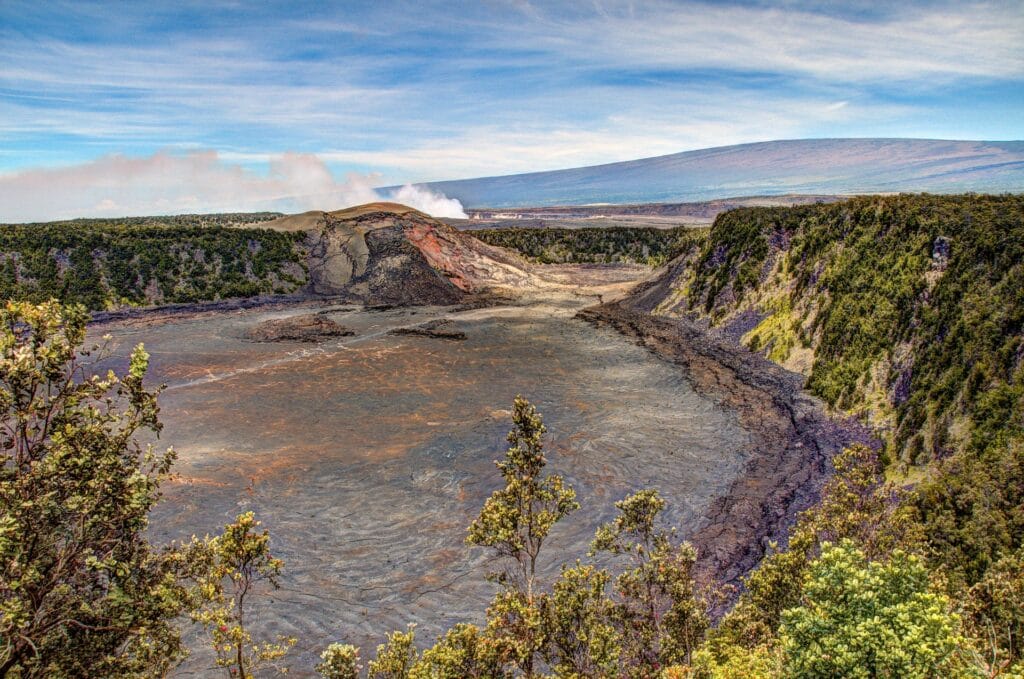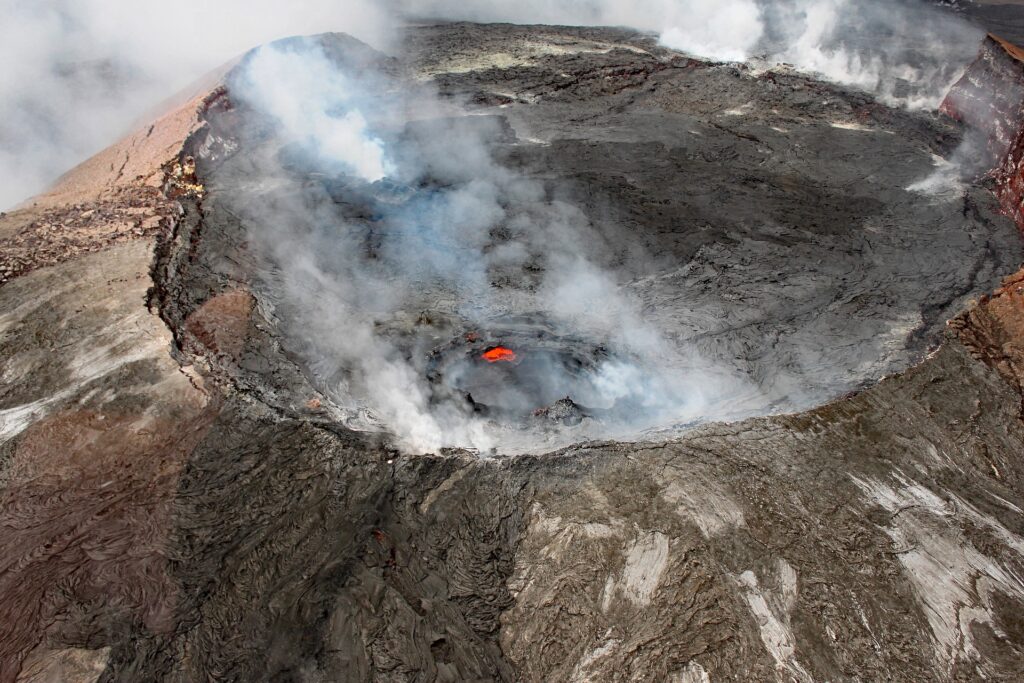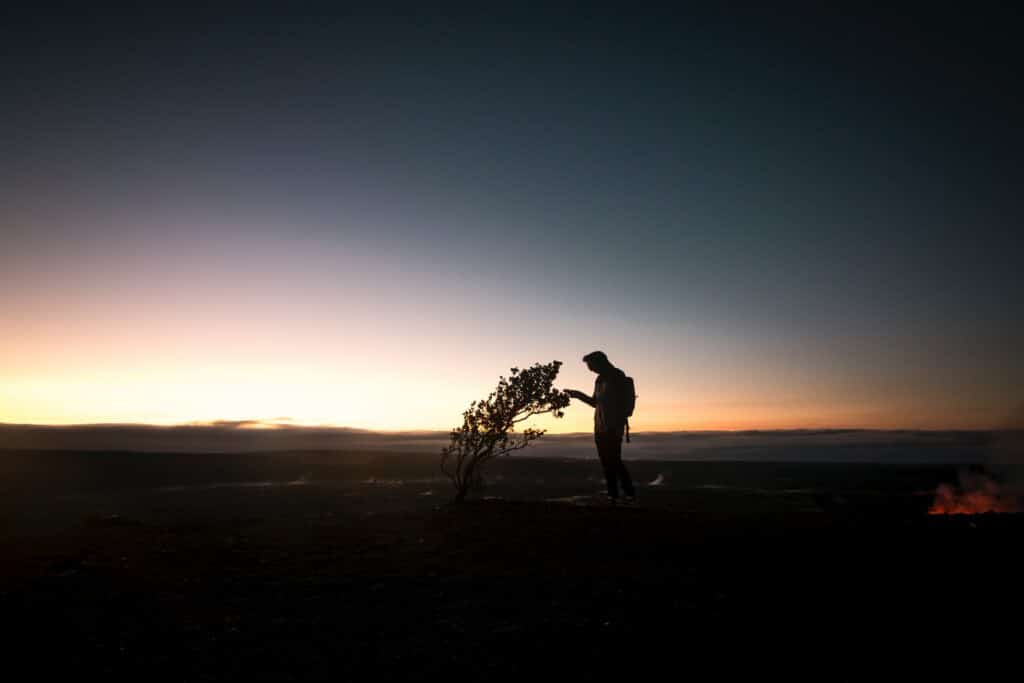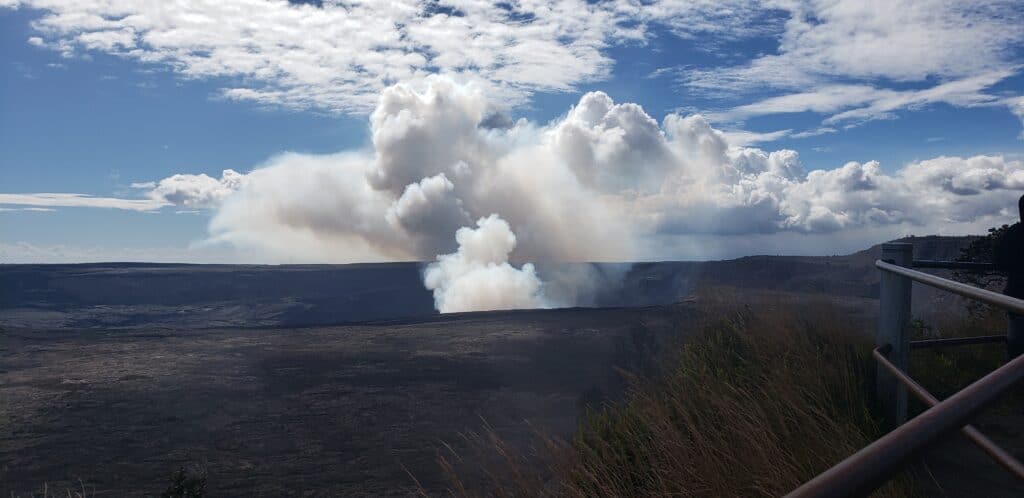The Big Island is home to an impressive total of five volcanoes:
Hualālai, Kohala, Mauna Kea, Mauna Loa, and Kīlauea, with Hawai’i Volcanoes National Park containing the latter two.
Kīlauea is one of the most active volcanoes in the world, and as such, she attracts quite a crowd. Millions each year in fact! The Kīlauea Volcano is actually the most visited attraction in Hawai’i, even despite the two-year nap she’s taken (previous to that, she erupted almost continuously from 1983 to 2018).

On December 20, 2020, the eve of the Winter Solstice, Tutu Pele (the goddess of the volcano) returned to the Halema’uma’u crater, a pit crater within Kīlauea’s caldera. According to the National Park Service, “lava activity is confined to Halemaʻumaʻu, with lava erupting from vents on the northwest side of the crater.”
Read more about the Kīlauea eruption here.
The lake of water that had begun forming in Halemaʻumaʻu has now been replaced by a glowing lava lake. As Kīlauea continues to erupt, the crater lake is estimated to be 627 feet deep (and still rising).
Within Kīlauea lies nature’s power of both destruction and creation. To behold this spectacular occurrence will certainly take your breath away!
Is a Hawaii vacation safe when the volcano is erupting?
If you’ve never visited the Big Island before, it’s natural to be concerned about how safe it is to visit in light of this volcanic activity and wonder if the volcano will impact your time on the island.

Rest assured, visiting the Hawaii Island during Kilauea’s eruption is not only safe, but also a once-in-a-lifetime experience! As with any adventure, there are a few safety considerations to make before visiting Hawaii Volcanoes National Park and getting a closer look at the majestic Kilauea:
- Maintain a social distance of six feet from others and wear a mask to decrease the spread of COVID-19.
- Hazardous volcanic gases that billows out of the crater can present a health risk, especially to those with heart or respiratory problems, pregnant women, and infants. Just another reason to keep your mask on!
- Stay on designated trails and marked overlooks, and avoid cliff edges and earth cracks. Do not stray off the trails or enter closed areas.
- Drive safely, respect the speed limit, and park in designated areas.
- Kīlauea’s summit is at 4,000 feet in elevation, so come prepared with long pants, a rain jacket, and closed-toe shoes.
How can I see lava?
Accessible areas in Hawai’i Volcanoes National Park are many kilometers from the eruption site, making the following the best locations for seeing the billowing plume of steam and gas by day, and the reflection of glowing lava deep within the lake by night:
- Kīlauea Overlook
- Keanakākoʻi
- Wahinekapu (Steaming Bluff) Overlook
- Waldron Ledge and other overlooks along the Crater Rim Trail
Tutu Pele’s return is truly a special experience you won’t want to miss! Ready to plan your visit to the park? For information on hours, directions, and more, visit this page.

What do I need to know about Big Island lodging?
Since there is so much to see and do in the park, many people choose to spend a minimum of one night in or near Hawai’i Volcanoes National Park, making Volcano Village the perfect place to stay. This small artist community is a mere five minutes from the park’s entrance and only an hour or two from all the beautiful, diverse sights that make Hawai’i Island so special.

Our charming Volcano Heritage Cottages are vacation rentals located in the heart of the same lush rainforest as the park. Spend the day exploring the park and spend the evening reminiscing about your adventures from the comfort of your historic Volcano Heritage Cottage!
